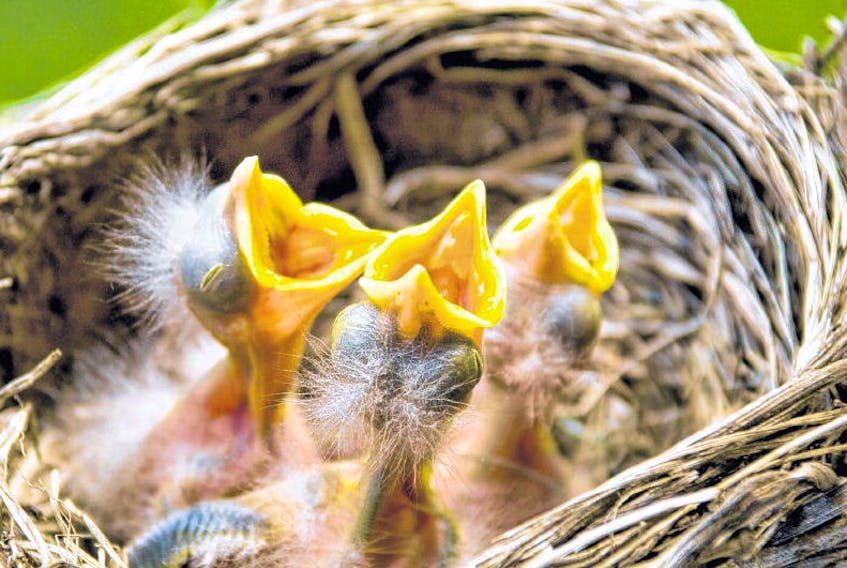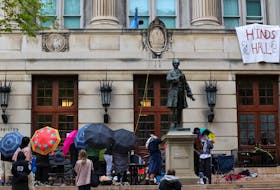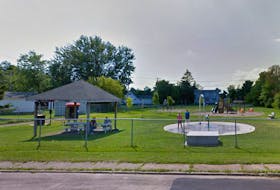Thousands of birds are lost each year in Nova Scotia because their nests are destroyed by industrial forestry, a Cape Breton environmental group says.
“It’s pretty obvious that there’s a really significant amount of bird nests being destroyed in Nova Scotia per year from clearcutting,” said Neal Livingston of the Margaree Environmental Association.
Livingston was referring to a study done by the Avian Conservation and Ecology called An Estimate of Nest Loss in Canada Due to Industrial Forestry Operations.
The study, based on 2013 statistics, concluded that between 214,500 and 1.69 million nests are lost each year as a result of logging across Canada.
Given that most bird nests contain between two and four eggs or hatchlings, that adds up to a big loss of bird life, Livingston said in a recent interview.
It’s difficult to pin down specific numbers per province but the annual loss, which scientists call “incidental take,” is likely around 50,000 birds in Nova Scotia, said study co-author Keith Hobson of Western University in London, Ont.
“Our study was on the incidental take of migratory birds due to logging operations conducted during the breeding season,” said Hobson, who teaches biology at Western, in an email Wednesday.
“The estimates were based on the best data we had up to 2103. The estimates were also necessarily of a broad range, primarily due to the difficulty in getting accurate estimates of the percentage of the harvest taking place during breeding.
“Probably the most meaningful estimates were based on what we think are the consequences to reduction in recruited adults into the population each year, and that is of the order of 50,000 birds.”
Besides the direct loss of birds when nests are cut down, the loss of habitat could have long-term impacts on bird populations, Hobson said.
Livingston said the negative effects on bird life from forestry contravenes Nova Scotia’s commitments under the Migratory Birds Conventions Act.
Better planning around harvesting during breeding time and more selective harvesting techniques other than clearcutting could reduce the bird toll, said Livingston, a woodlot owner in Mabou who received awards for his selective harvesting approach.
“They talk about that’s from rainforest destruction and things like that where they go in the winter and I started thinking, well, this is where they’re nesting. This is where they’re having babies.”
Concerns about clearcutting’s impact on the environment, including the bird population, were raised by a provincial steering panel on forestry in 2010. The report, called Restoring the Health of Nova Scotia Forests, called for increased protection for breeding bird habitats especially during the May/June breeding season.
“Many songbirds and other species are undergoing rapid decline; forest harvesting during the breeding period destroys hundreds of nests, contrary to the Migratory Birds Convention Act,” the report said.
The provincial Department of Natural Resources said its biologists, wildlife technicians and other specialists work to manage Nova Scotia bird populations and their habitat.
“The department is actively engaged in undertaking and supporting research on birds in forested landscapes,” spokesman Bruce Nunn said in an email Wednesday.
“Bird populations and habitat are impacted by many human activities on the landscape and forestry is not among the most significant source of impacts” compared to cat predation, housing and road development, and vehicle collisions.
The department has guidelines encouraging protection of raptor nests and species including Bicknell’s thrush, Canada warbler, chimney swift and the common nighthawk, and others.
The DNR also considers bird conservation in project reviews such as environmental assessments. Nunn also referred to the department’s Agricultural Biodiversity Conservation program that promotes best farming practices that reduce impacts to birds.









